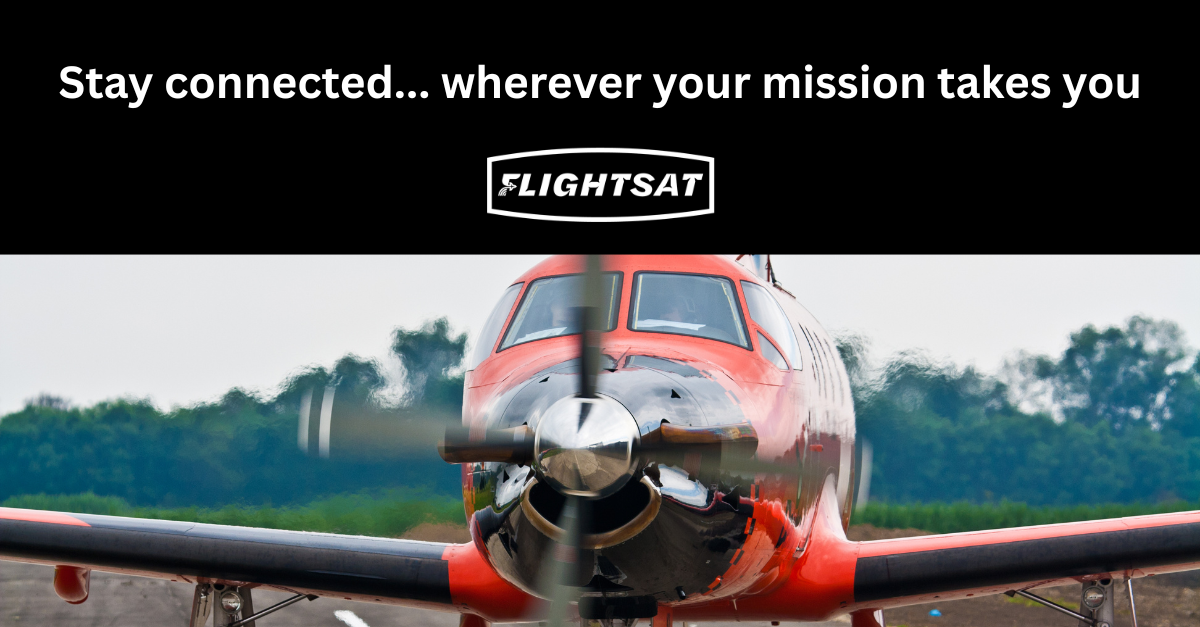Across Australia and around the world, public safety aviation plays a crucial role in saving lives, safeguarding communities, and supporting national security through aeromedical retrieval, firefighting, search and rescue, law enforcement, border patrol, and disaster response.
The Challenge: Communication Black Spots in Critical Moments
Public safety aircraft often fly beyond the reach of mobile networks and conventional radio coverage. This creates dangerous communication gaps during missions where every second counts, whether it’s consulting a trauma specialist during flight, coordinating a multi-agency emergency response, or maintaining secure situational awareness in high-risk airspace.
While military aircraft have long benefited from advanced satellite communications (SATCOM), civilian and non-profit operators, including air ambulance services, face a very different reality. High costs, complex systems, and limited infrastructure have kept SATCOM out of reach.
The Opportunity: Affordable SATCOM Has Finally Landed
That’s changing.
Low-Earth Orbit (LEO) satellite networks, such as Starlink, are reshaping what’s possible. With low latency, global coverage, and aviation-grade equipment, Starlink, when integrated through FlightSat, can deliver real-time, high-bandwidth connectivity to even the smallest fixed-wing and rotary platforms.
This means:
- Secure, real-time transmission of medical, mission, or intelligence data
- In-flight clinical consultation, operational coordination, or remote command support
- Safer, more informed decision-making in dynamic conditions
- Resilience when terrestrial infrastructure is compromised
Case Studies from Around the World
- In the United States, fire and rescue aircraft increasingly rely on SATCOM to coordinate across vast firegrounds during major bushfire seasons.
- In New Zealand, emergency response during Cyclone Gabrielle highlighted the value of airborne SATCOM to maintain contact when roads, power, and mobile networks were gone.
- In Canada, organisations like Ornge and the Royal Canadian Air Force use SATCOM to ensure seamless coordination during long-range patient transfers.
- In Scandinavia, remote diagnostics via satellite-enabled air ambulances are pushing the boundaries of airborne telemedicine.
Why This Matters in Australia
Australia’s geography presents unique challenges and opportunities. From remote bush communities to vast coastlines and fire-prone ranges, public safety crews often operate far beyond the reach of terrestrial communications. Yet there is still no nationally deployed SATCOM capability designed for public safety aviation.
At Fire Hawk Services, we’re working to change that, bringing affordable, aviation-optimised Starlink connectivity to the public safety sector through our exclusive partnership with FlightSat. We’re currently engaging with public safety aviation organisations to explore trial programs and long-term applications.
Heading to Perth for AFAC25
Fire Hawk Services is proud to announce that we’ll be attending the AFAC Conference 2025 in Perth this August, alongside our partners at Overwatch Aero. As the largest emergency management conference in the southern hemisphere, AFAC brings together leaders in public safety, aviation, fire, health, and emergency response to share knowledge and explore emerging technologies.
We’ll be there to showcase FlightSat, a next-generation SATCOM capability that delivers reliable, high-bandwidth connectivity to Australia’s public safety aviation sector. Join us to learn how affordable satellite communications can transform mission safety, airborne medical care, and emergency response coordination.
Let’s Talk
If your organisation operates in public safety aviation, across health, fire, police, defence, or border operations, and you’re ready to explore the next generation of mission-critical communication, we’d love to hear from you.
FlightSat@firehawkservices.com.au
Or, come and find us on the AFAC2025 expo floor.

